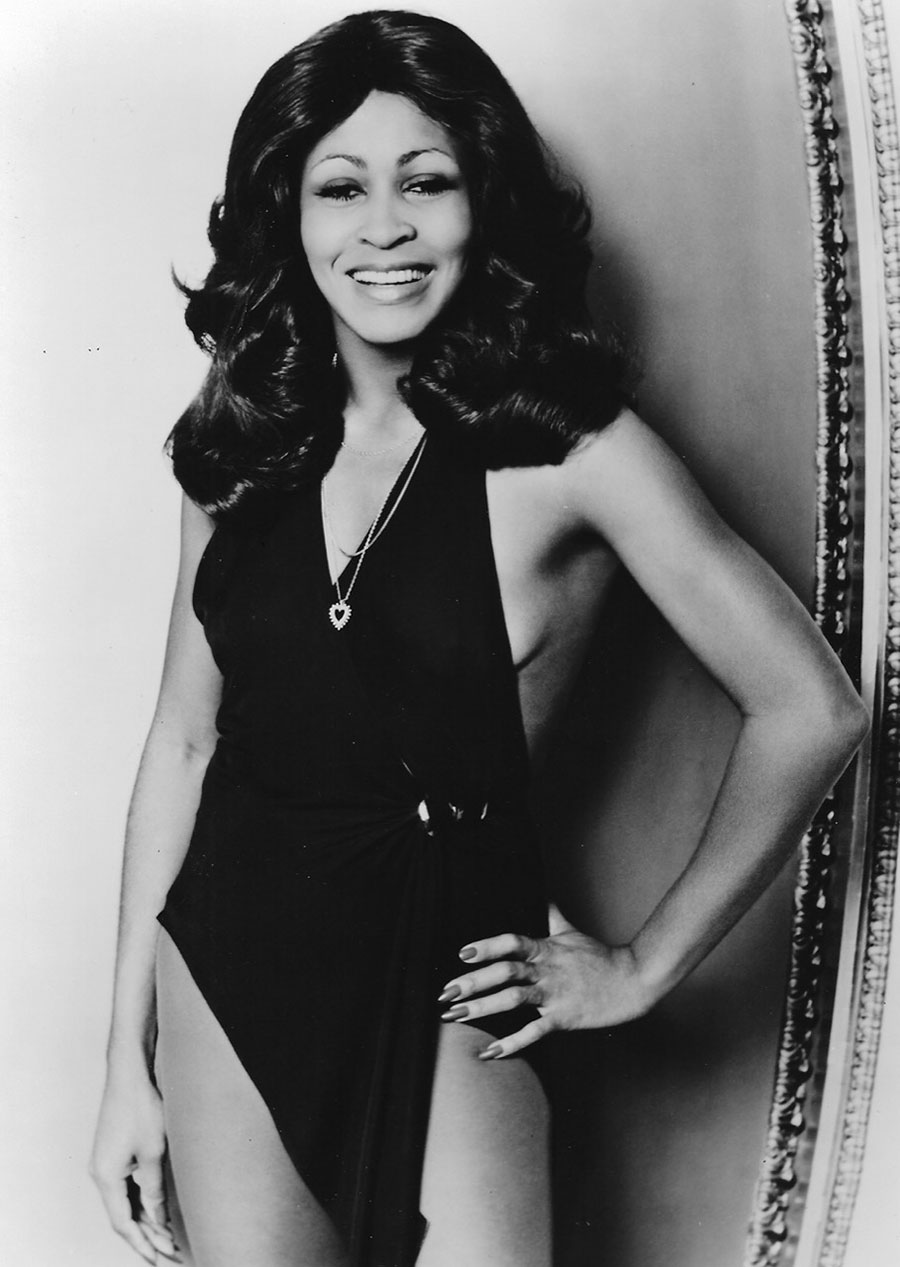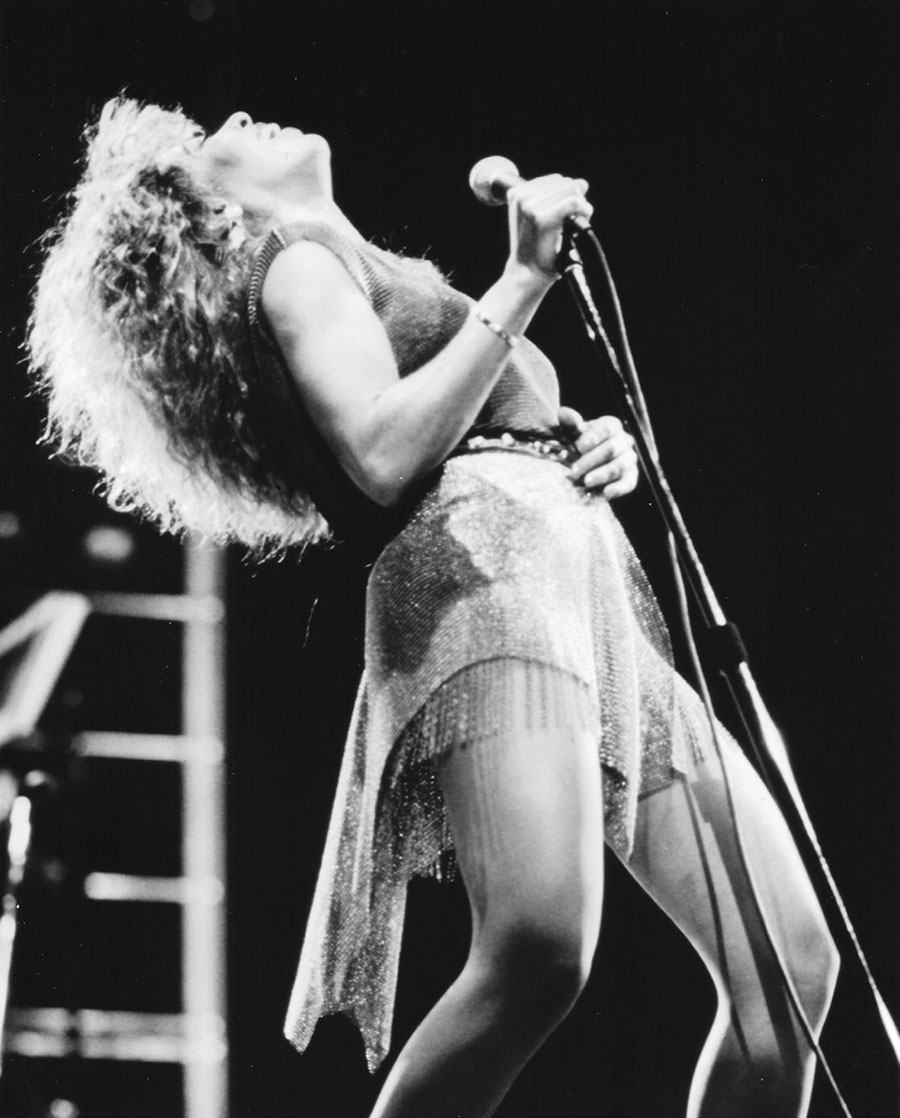Tina Turner, whose modest beginnings balanced out her emergence as one of the most admired entertainers in the world, died on May 24, 2023. She was 83.
With her 1987 performance at Denver’s McNichols Arena, the sexy godmother of rock ’n’ roll, who had just turned 49, was concluding a phase of her long career. The show was the final stop on her US tour, which she claimed would be her last ever. She cited her years of roadwork with the Ike & Tina Turner Revue, plus the incessant touring that had ensued when her Private Dancer album topped the international charts in 1984.
“I’ve been around long enough,” she laughed. “I’m leaving people with enough! They’ve got videotapes to play now.”
Turner’s assertiveness about her career jibed with her give-it-all-you-got image—the resounding voice, the heartbreak face, the wild hair, the great legs. But that expansive spirit had emerged as she triumphed over adversity, making her own way in the world to survive.
Turner was on her own from the beginning, after her parents, who sought work during World War II in Knoxville, left their three-year-old in the care of relatives in Nutbush, Tennessee. Turner (née Anna Mae Bullock) eventually left her sharecropper cousins to rejoin her mother in East St. Louis, Illinois, where her sister brought her to the Club Manhattan to see the hottest band in town—the Kings of Rhythm, led by a guitarist named Ike Turner.
Having found her voice in the church choir, Anna Mae approached Turner to sing with his band, but he ignored her. One night she simply took hold of a microphone and started to belt out a B.B. King tune at her table. Ike stopped playing the organ, ran off the stage and told her, “I didn’t know you could really sing. What else do you know?”
After marrying in 1958, Ike gave Anna Mae (whom he renamed Tina) her start fronting his powerhouse rhythm & blues show. Starting in 1960, they strung together more than a decade of hits as the Ike & Tina Turner Revue, including “A Fool in Love,” “Come Together,” the legendary “River Deep, Mountain High” and their Grammy-winning version of Creedence Clearwater Revival’s “Proud Mary.”
But her lifestyle as Ike’s prisoner was hellish—her professional career was marked by his increasing violence and dependence on drugs, his dominating and brutal behavior. “He kept control of me with fear,” she said.
Tina’s desperation and disappointment eventually led her to walk away from Ike and strike out on her own—with 36 cents in her pocket and her newfound Buddhist beliefs. A year after their split in 1975, Tina launched a solo career that faltered.
But in 1984, she soared into superstardom with Private Dancer and the hits “What’s Love Got to Do with It” (a multiple Grammy winner), “Let’s Stay Together,” “Better Be Good to Me” and the title track. The album sold more than 10 million copies worldwide.
“I learned not to typecast myself after my experience with the song ‘What’s Love Got to Do with It,’” she said. “That was something I wouldn’t have taken on normally, but my manager’s guidance told me that it could be one of those moves that end up in something good.”
Turner, who in 1975 had portrayed the Acid Queen in the film version of the Who’s Tommy, then accepted the role of Aunty Entity, the despotic boss of a post-holocaust Dodge City in the movie Mad Max Beyond Thunderdome. She sang on the historic USA for Africa recording of “We Are the World.” She performed with Mick Jagger at Live Aid, acted with David Bowie in a Pepsi commercial and schmoozed on her million-selling Break Every Rule album with Phil Collins (drums on the hit “Typical Male”) and Steve Winwood (synthesizer on “Afterglow”).
Turner got the celebrity biopic treatment in 1993—What’s Love Got to Do with It, the feature film based on I Tina, her best-selling 1986 autobiography, opened. But she didn’t plan to see the movie, which focused on her relationship with Ike Turner.
“The movie compresses 16 years into two hours,” she said prior to embarking on her first American tour in six years—like many stars who had announced retirements from the stage and then returned. “I didn’t have approval in my contract. I’ve got fans who are going to see that movie and think it’s true, but it’s embellished bits and pieces.”
The primary focus of What’s Love Got to Do with It was on the dark times. Audiences sat through the ferocious beatings that Turner endured in her marriage to her ex, who was jailed in the late ’80s on drug and drunken-driving convictions.
“I’m not supporting any causes,” she said in reference to anti-abuse advocacy. “I can’t. It’s too much responsibility dealing with people who aren’t able to handle those kinds of situations. Anything that anybody wants to look up to me for, fine—that’s their need. But I don’t try to live up to any image. I’m the same woman I was when I went out to get myself to where I am now.
“I was just a country girl who worked her way through life, and I’m still continuously doing that. And I’ll just keep going, because I don’t want to get caught up in anything ever again.”





